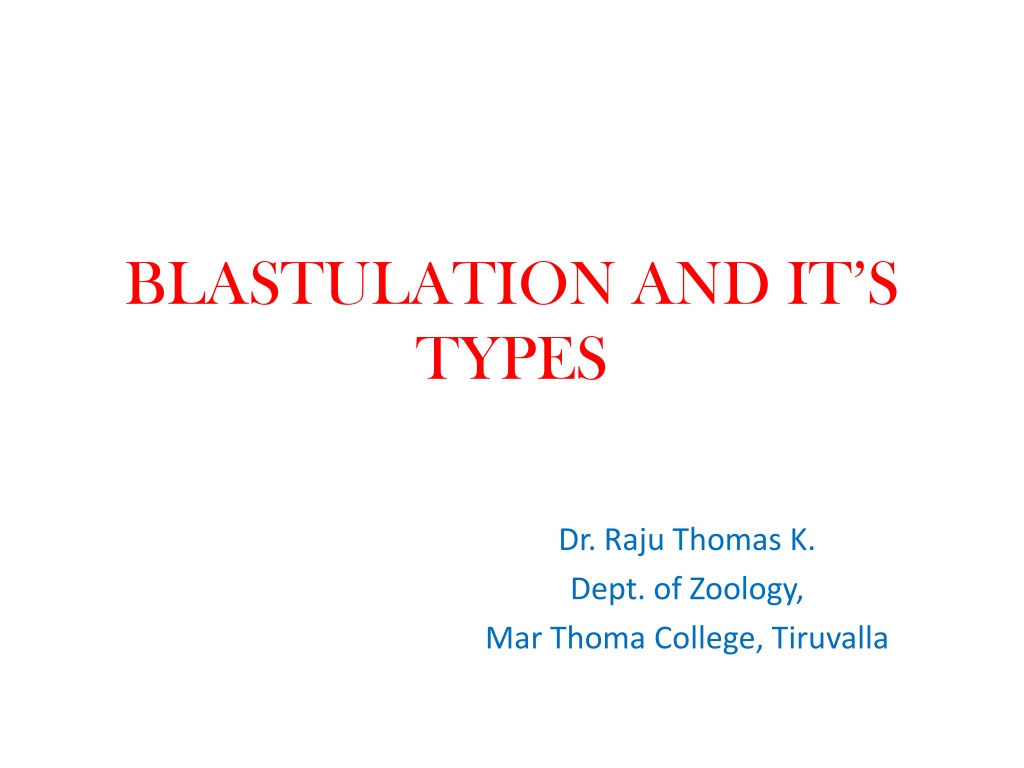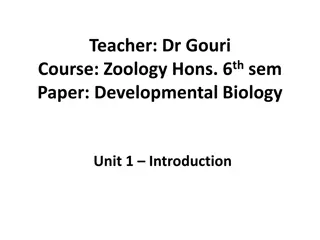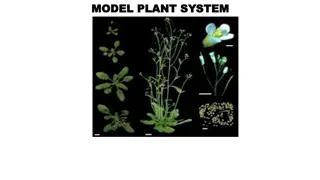Understanding Blastulation and its Types in Developmental Biology
Blastulation is a crucial stage in embryonic development where the morula transforms into a blastula with distinct characteristics like blastocoel and blastoderm. There are different types of blastulae such as Coeloblastula, Stomoblastula, Stereoblastula, Discoblastula, and Blastocyst, each unique in structure and function, catering to various species' developmental needs.
Download Presentation

Please find below an Image/Link to download the presentation.
The content on the website is provided AS IS for your information and personal use only. It may not be sold, licensed, or shared on other websites without obtaining consent from the author. Download presentation by click this link. If you encounter any issues during the download, it is possible that the publisher has removed the file from their server.
E N D
Presentation Transcript
BLASTULATION AND ITS TYPES Dr. Raju Thomas K. Dept. of Zoology, Mar Thoma College, Tiruvalla
Blastulation The blastomeres in the early cleavage stage tend to assume a spherical shape. The whole embryo appear to posses a shape of mulberry. This stage is called Morula. Further cleavage to morula terminates in Blastula. It can be defined as a hollow sphere of blastomeres, surrounding a cavity, the Blastocoel. The process of formation of blastula is called Blastulation. The cellular layer surrounding the blastocoel is called Blastoderm.
Types of Blastulae Coeloblastula Blastula containing large spacious blastocoel. The blastula from holoblastic equal cleavage is called Equal Coeloblastula(Eg: Echinoderms, Branchiostoma) and that results from Holoblastic unequal cleavage is called Unequal Coeloblastula(Eg:Frog)
Stomoblastula A blastula with a mouth like opening is called Stomoblastula.The blastula develops an opening leading to the blastocoel. This opening serves as the mouth through which the maternal tissue is engulfed for nutrition. Eg: Sycon
Stereoblastula Composed of an aggregate of larger sized and relatively lesser number of cells without or with extremely small blastocoelic space in the centre. Eg: Insects, Nereis(Worm), Amphibians
Discoblastula Consists of a disc shaped mass of blastomers overlying a large yolk mass. Result of Meroblastic discoidal cleavage. Eg: Fishes, Reptiles and Birds
Blastocyst Blastula Stage of mammals. Consists of a hollow spherical blastula containing inner cell mass. Outer single layer of cells enclosing the blastocoel is Trophoblast. Trophoblast helps in embryo. nutrition in developing























